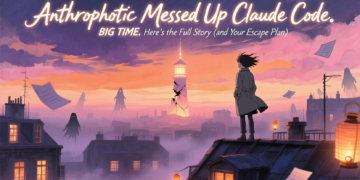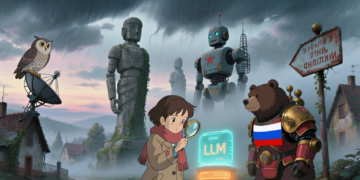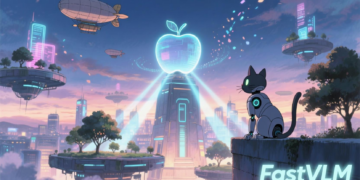The quantum computing landscape is heating up as two tech giants, Microsoft and Google, push the boundaries of what’s possible in this revolutionary field. Microsoft’s Majorana 1 quantum chip and Google’s Willow chip represent distinct approaches to quantum computing, each with its own breakthroughs, challenges, and visions for the future. This article dives deep into these advancements, incorporating fresh insights into quasi-particles (referred to as “Quaja A particles” in some discussions), the scalability debate surrounding 1 million qubits, and global perspectives—including skepticism about claims from China and India’s nascent efforts in quantum technology.
Microsoft’s Majorana 1: A Foundational Leap in Physics
Microsoft’s Majorana 1 quantum chip marks a monumental achievement in quantum physics, rooted in the creation of topological qubits—a theoretically stable and error-resistant alternative to traditional qubits. Announced as a breakthrough, this chip hinges on exotic Majorana particles and a novel “topoconductor” material, challenging our understanding of matter itself.
Key Achievements
- Creation of Majorana Particles: Microsoft has successfully detected and engineered Majorana particles—quantum entities that are their own antiparticles. First theorized by physicist Ettore Majorana in 1937, these particles had remained elusive until recent experiments with nanowires (circa 2017-18) confirmed their existence as emergent properties of complex systems. This discovery is not just a technical feat but a profound validation of fundamental physics.
- Topoconductor Material: The Majorana 1 chip introduces a “topoconductor”—a topological state of matter distinct from solids, liquids, gases, or plasmas. Built atom-by-atom using materials like indium arsenide and aluminum, this medium hosts Majorana zero modes on its surface, leveraging unique topological properties to protect quantum information from environmental noise.
- Topological Qubits: Unlike traditional qubits, which are highly susceptible to decoherence (loss of quantum state due to external interference), topological qubits encode information non-locally across a surface. This distributed storage makes them inherently more robust, potentially reducing the need for extensive error correction.
The Quaja A Connection
Recent discussions have introduced the concept of “Quaja A particles” (likely a colloquial or misnamed reference to quasi-particles like Majorana modes). These are not fundamental particles listed in the Standard Model but emergent phenomena arising from the collective behavior of many interacting particles—such as electrons in a superconductor. Think of them as ripples in a quantum field, analogous to how a rumor spreads through a crowd: the individual source matters less than the collective effect. In the context of Majorana 1, these quasi-particles (Majorana zero modes) enable the topological qubits’ stability, making them a cornerstone of Microsoft’s approach.
Current State and Scalability Debate
Microsoft’s press release touts the potential for “1 million qubits on a single chip,” a tantalizing prospect given the chip’s compact size—small enough to fit in your hand. However, the current prototype features only eight topological qubits, a far cry from the million-qubit vision. This gap has sparked skepticism:
- Feasibility: Scaling from eight to 1 million qubits requires monumental engineering leaps. The precision required to align atoms in the topoconductor, as noted by Microsoft’s Krista Svore (“spraying atom by atom”), suggests that defects could derail progress.
- Hype vs. Reality: Critics argue that Microsoft’s claims echo past exaggerations, such as China’s assertions of breaking military-grade encryption with a purchased quantum computer. Without demonstrated algorithms or practical problem-solving (e.g., outperforming supercomputers on real-world tasks), the million-qubit goal remains speculative.
Future Potential
If successful, topological qubits could redefine quantum computing. Their error resistance might bypass the massive error-correction overhead plaguing other systems, enabling stable, scalable machines. Applications could include simulating complex chemical reactions, designing self-healing materials, or optimizing global logistics—problems intractable for classical computers. Yet, experts estimate practical realization could be a decade or more away.
Google’s Willow: Practical Quantum Supremacy
Google’s Willow chip, unveiled in December 2024, takes a more immediate, hands-on approach, building on years of progress with superconducting qubits. Unlike Microsoft’s foundational focus, Google emphasizes practical demonstrations of quantum advantage.
Key Achievements
- 105 Qubits: Willow boasts 105 qubits—over 13 times more than Majorana 1’s current count. While modest compared to the million-qubit dream, it’s a significant step in scaling.
- Exponential Error Reduction: Google has tackled a 30-year challenge in quantum error correction, showing that error rates halve with each step up—from 3×3 to 5×5 to 7×7 qubit grids. This “below threshold” milestone means errors can be managed effectively as the system grows.
- Quantum Advantage: Willow performed a random number generation task in minutes, a computation estimated to take classical supercomputers 10 septillion years (10^25). While the problem lacks real-world utility, it proves quantum systems can outpace classical ones on specific tasks.
Practical Error Correction
Google’s strategy sidesteps inherently stable qubits, instead refining error correction through sophisticated algorithms and architecture. Superconducting qubits, cooled to near absolute zero, form circuits with near-zero resistance, allowing precise control despite environmental sensitivity. This pragmatic approach contrasts sharply with Microsoft’s theoretical stability.
Current State and Future Potential
Willow’s quantum advantage is a proof-of-concept rather than a ready-for-market solution. Scaling further while maintaining performance remains a challenge, but Google’s trajectory suggests practical applications—like drug discovery or climate modeling—could emerge sooner than Microsoft’s topological vision. The synergy with AI (e.g., DeepMind’s AlphaFold) enhances its near-term promise.
Comparing the Two Approaches
Microsoft and Google represent divergent philosophies in the quantum race:
- Foundational vs. Practical: Microsoft bets on a stable foundation with topological qubits, while Google prioritizes immediate results with superconducting qubits.
- Error Correction: Microsoft seeks inherent stability; Google masters algorithmic correction.
- Current Capabilities: Willow’s 105 qubits and quantum advantage dwarf Majorana 1’s eight qubits, though Microsoft’s approach could leapfrog if scaled.
- Timeline: Google is closer to practical use, while Microsoft’s payoff is longer-term.
The 1 Million Qubit Question
Microsoft’s million-qubit claim hinges on the compact nature of topological qubits—potentially fitting millions into a handheld chip, unlike the football-field-sized machines of traditional designs. However, without a clear roadmap or demonstrated progress beyond eight qubits, it’s a theoretical ceiling. Google, meanwhile, focuses on incremental scaling, avoiding such bold projections.
Global Context: China and India
- China: Past claims of quantum supremacy (e.g., breaking encryption) have been met with skepticism, often lacking peer-reviewed evidence or practical demos. Some suspect these were marketing ploys leveraging imported tech.
- India: Efforts like the “TR” quantum computer (with 27 qubits) signal ambition, but limited public data suggests it’s still early-stage, far from competing with Microsoft or Google.
Comparison Table
| Aspect | Microsoft Majorana 1 | Google Willow |
|---|---|---|
| Qubit Type | Topological qubits (Majorana-based) | Superconducting qubits |
| Current Qubit Count | 8 | 105 |
| Error Correction | Inherent stability via topology | Algorithmic, exponential error reduction |
| Scalability Goal | 1 million qubits (theoretical) | Incremental scaling (no specific ceiling) |
| Quantum Advantage | Not yet demonstrated | Achieved (random number task) |
| Timeline to Practicality | Long-term (decade+) | Near-term (years) |
| Key Breakthrough | Majorana particles, topoconductor material | Error correction “below threshold” |
Potential Applications and Impact
Both approaches promise transformative applications:
- Drug Discovery: Simulating molecular interactions could slash development times.
- Material Science: Self-healing materials or plastic-eating enzymes could address environmental crises.
- Climate Modeling: Enhanced predictions could refine climate strategies.
- Optimization: Solving logistics or financial puzzles could boost efficiency.
The interplay with AI—augmenting systems like AlphaFold—amplifies these possibilities, blending quantum horsepower with machine learning precision.
Conclusion: Hype, Hope, and Hard Data
The quantum computing race is a tale of two visions: Microsoft’s Majorana 1 lays a groundbreaking foundation with topological qubits and Majorana particles, while Google’s Willow delivers tangible quantum advantage today. Yet, both face hurdles—Microsoft in scaling, Google in sustaining error correction.
Skepticism is warranted. Microsoft’s million-qubit claim lacks concrete evidence, echoing overhyped narratives from China. Without algorithms solving real problems (unlike Google’s albeit impractical demo), it’s a promise, not a product. India’s efforts, while promising, remain embryonic.
Statistics and comparison—not hype—should guide our optimism. As one observer quipped, “Lies, damned lies, and statistics” remind us to demand proof. For now, Google leads in practice, Microsoft in potential. The real winner may emerge from their convergence with AI, unlocking solutions to humanity’s toughest challenges. Until then, we watch, research, and wait—educated, not enthralled.


















